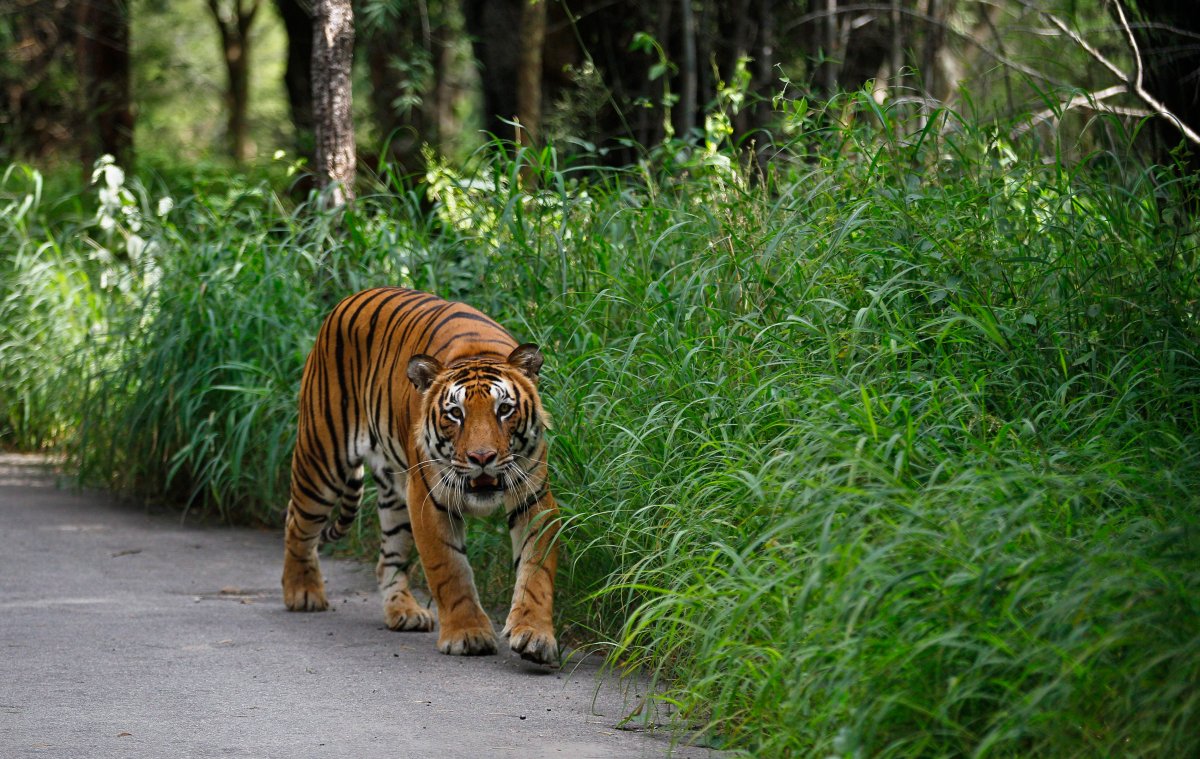Indian hunters finally tracked down and killed a tigress after she and her two cubs were linked to the killings of as many as 13 people over a two-year period.

The Indian Express newspaper reported on Friday that the tigress, known as T1, was shot and killed by forestry staffers after an extensive hunt that saw her pursuers use cologne to attract her.
Coverage of tigers on Globalnews.ca:
BBC News confirmed the story with a senior wildlife official.
The tigress was killed after a team set after her using a firearm and tranquilizer gun and parked itself on road where the feline was sighted.

Get breaking National news
The team initially spotted the tigress close to a road, but “the sighting was only fleeting,” the newspaper reported.
READ MORE: India may use Calvin Klein cologne to lure a man-eating tiger — here’s why
The tigress was then seen again around 11 p.m.
A forest ranger shot it with a tranquilizer, but then she charged at her hunters.
A man named Asgar Ali Khan, who’s the son of a sharpshooter, then shot the tiger in self-defence, officials said.
And so ended an ordeal that is believed to have begun in 2016, when the tigress was linked to the deaths of 10 people in 20 months before three more people were killed in August, BBC News reported.
Her cubs were believed to have been involved in the August killings.
The tigress’ killings were confirmed through DNA swabs.
Bodies were left without their heads as she took the bodies, and one of the victims had a leg torn off.
Hunters will now focus on capturing her cubs, according to the Indian Express.
READ MORE: China reverses ban on using tiger, rhino body parts for medical use
Wildlife officials had used Calvin Klein Obsession cologne to draw the tiger because it contains civetone, a pheromone that’s taken from a civet, a mammal from the viverridae family, a species with mammals known for their climbing skills.
Tests at the Bronx Zoo in New York showed that Obsession for Men generated excitement in cats, but Obsession for Women did not.
The civetone is believed to represent a kind of “territorial marking” upon which cats rub their own scents, biologist Miguel Ordeñana with the Natural History Museum told the Washington Post in 2013.
- With files from Katie Dangerfield














Comments